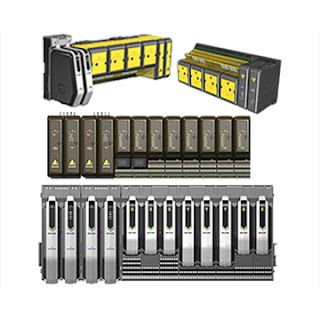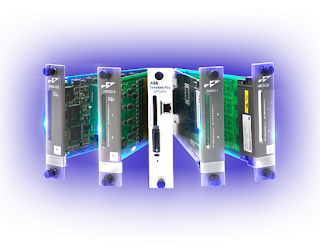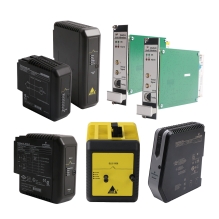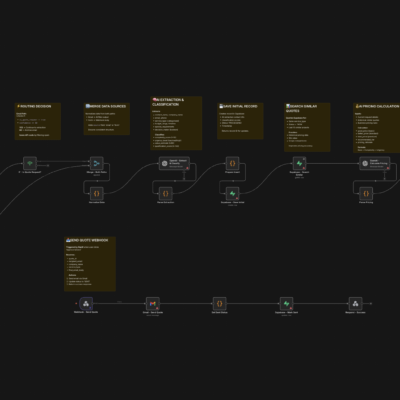A single failed DCS module can halt an entire production line, costing manufacturers thousands of dollars per hour in lost revenue. Maintenance technicians face this nightmare scenario regularly, racing against time with replacement parts that promise compatibility but deliver disappointment. The industrial automation sector is experiencing a reliability crisis where repair attempts fail not from lack of expertise, but from fundamentally flawed components. Counterfeit modules, degraded surplus stock, and mismatched specifications turn routine maintenance into repeated failures that erode both system performance and technician confidence. The financial impact extends beyond immediate downtime—each failed repair attempt compounds labor costs, extends outages, and risks secondary damage to interconnected systems. This cycle of failure stems from a single root cause: unreliable component sourcing. Proven DCS solutions offer a preventive pathway forward, transforming repair operations from reactive gambles into predictable, successful outcomes. By prioritizing verified, high-quality components from the outset, facilities can eliminate the costly pattern of repair failures and restore confidence in their automation maintenance programs.
The Critical Role of DCS Modules in Industrial Automation
Distributed control system modules function as the nervous system of modern manufacturing facilities, executing real-time process control decisions that maintain product quality and operational safety. These specialized components manage everything from temperature regulation in chemical reactors to pressure control in refining operations, processing thousands of data points per second to keep production within precise parameters. When a single module fails, the ripple effects cascade immediately—automated sequences halt mid-cycle, safety interlocks trigger emergency shutdowns, and entire production lines go dark. A failed analog input module can blind operators to critical process variables, while a malfunctioning controller card can freeze valve actuators in dangerous positions. The lifecycle challenges compound over time as systems age beyond manufacturer support windows, yet facilities depend on these installations for decades of continuous operation. Original equipment becomes increasingly difficult to source, forcing maintenance teams into reactive scrambles during unplanned outages. DCS solutions designed for operational continuity address these vulnerabilities through strategic component availability and verified compatibility, ensuring that when failures occur, technicians have immediate access to modules that restore full functionality without extended troubleshooting or compatibility issues that prolong costly downtime.

Why Standard Repairs Fail with DCS Components
Most repair failures originate not from diagnostic errors but from fundamental component defects that reveal themselves only after installation. Technicians frequently encounter modules that pass visual inspection yet fail under operational load due to degraded internal circuitry, counterfeit integrated circuits with inferior tolerances, or refurbished boards with hidden micro-fractures in solder joints. The counterfeit problem has grown particularly acute as sophisticated operations now replicate OEM packaging, serial numbers, and even holographic labels with alarming accuracy. One chemical processing facility experienced three consecutive controller failures over two weeks, each replacement sourced from different “authorized” distributors, before discovering all three contained remarked chips salvaged from consumer electronics—components never designed for industrial temperature ranges or electromagnetic interference levels. Substandard industrial spares create cascading failures that extend beyond the immediate repair, as voltage irregularities from poorly manufactured power supply modules can damage downstream I/O cards, while timing inconsistencies in processor modules corrupt data across entire control networks. A Midwest refinery documented $340,000 in secondary equipment damage traced to a single counterfeit redundancy module that failed to switch during a primary controller fault. These scenarios share a common thread: procurement decisions driven by price rather than verified quality. High-quality components eliminate this failure cycle by meeting original design specifications for thermal performance, signal integrity, and electromagnetic compatibility—the non-negotiable requirements that separate reliable repairs from expensive repeated failures.

Overcoming the Discontinued Parts Dilemma
The obsolescence timeline for DCS modules creates a procurement crisis that intensifies yearly as manufacturers discontinue product lines while installed systems remain operational for 20-30 years. A pharmaceutical facility running a 15-year-old control system discovered their processor module supplier had ceased production eight years prior, leaving them with zero authorized sources when their redundant controller failed during a validation cycle. Legacy systems face compounding scarcity as original manufacturers exit markets, merge with competitors, or simply abandon older product support to focus on current-generation platforms. This supply gap forces maintenance teams into high-risk sourcing from unverified brokers, surplus liquidators, and online marketplaces where authenticity remains uncertain. Effective verification begins with documentation cross-referencing—comparing module date codes against manufacturer production records, examining PCB construction details that counterfeiters typically simplify, and testing electrical characteristics against original datasheets using calibrated instruments. Strategic inventory management provides the most reliable defense through calculated stockpiling of failure-prone modules before discontinuation, establishing relationships with specialized industrial spares distributors who maintain authenticated legacy inventories, and implementing condition monitoring that predicts failures before emergency situations force compromised sourcing decisions. Quick access solutions for maintenance technicians depend on pre-established supplier networks with verified stock availability, eliminating the panic-driven purchasing that leads to counterfeit infiltration and enabling same-day or next-day delivery of authenticated components that restore systems to full operational status without the trial-and-error cycle that extends costly downtime.

Proven Framework for Reliable DCS Module Sourcing
Vetting Suppliers for Genuine DCS Solutions
Establishing supplier credibility begins with verifying third-party certifications that validate quality management systems—ISO 9001 certification demonstrates documented process controls, while AS6081 or AS6496 certifications specifically address counterfeit avoidance in electronics supply chains. Request certificates of conformance for each component shipment, documents that trace the module’s custody chain from original manufacturer through distribution channels to your facility. Legitimate suppliers provide these without hesitation, while evasive responses signal procurement risk. Conduct facility audits for high-value supplier relationships, examining their receiving inspection processes, environmental storage controls, and traceability systems that prevent counterfeit infiltration. Evaluate supplier technical support capabilities by requesting pre-sale compatibility verification—genuine DCS solutions providers employ engineers who can cross-reference your system configuration against component specifications before purchase. Industrial materials suppliers like Amikon maintain extensive inventories of authenticated legacy components with documented traceability, addressing the critical need for verified parts when original manufacturers no longer support older systems. Check supplier longevity in the industrial automation sector, as established firms with decade-plus operational histories have reputational stakes that discourage quality compromises. Verify financial stability through credit reports and industry references, since unstable suppliers may source from questionable channels to maintain cash flow during difficulties.
Technical Specifications for High-Quality Components
Critical performance parameters separate industrial-grade modules from consumer-derivative counterfeits, starting with operating temperature ranges that genuine components withstand from -40°C to +70°C without performance degradation. Examine electrical specifications for noise immunity levels, particularly common-mode rejection ratios exceeding 120dB for analog input modules operating in electromagnetically harsh environments. High-quality components meet conformal coating standards that protect circuitry from moisture, dust, and chemical exposure—authentic boards display uniform coating thickness without gaps around component leads. Compatibility testing must extend beyond simple power-up verification to include stress testing under actual process loads, cycling modules through full temperature ranges while monitoring signal accuracy and response times. Perform loop testing that exercises all I/O points simultaneously rather than sequential checks that miss crosstalk issues between channels. Validate communication timing by measuring bus response latencies under maximum network traffic conditions, ensuring modules maintain deterministic performance when systems operate at peak capacity. Document baseline performance metrics for each critical parameter, creating reference standards that enable future comparisons when evaluating replacement components or diagnosing intermittent failures that emerge under specific operating conditions.
Lifecycle Management Strategies
Preventive replacement scheduling transforms reactive maintenance into controlled obsolescence management by tracking module mean-time-between-failure data across your installed base and replacing high-risk units during planned shutdowns before emergency failures force uncontrolled outages. Implement condition monitoring for processor modules and power supplies using diagnostic tools that track error rates, temperature trends, and capacitor health indicators that predict impending failures weeks before catastrophic events. Create future-proof inventory buffers by calculating criticality scores for each module type—multiplying failure probability by downtime cost—then stocking quantities that cover lead times plus safety margins for your highest-risk components. For discontinued modules, establish buy-last-time purchase agreements when manufacturers announce end-of-life, securing authenticated stock directly from OEMs before production ceases and market supply shifts entirely to unverified sources. Develop alternate sourcing strategies that identify compatible modules from current product lines capable of replacing obsolete units through firmware updates or adapter interfaces, reducing long-term dependency on shrinking legacy inventories. Partner with specialized repair services that refurbish modules to OEM specifications using genuine components, extending lifecycle availability for systems where replacement modules no longer exist in any new-stock channel.
Step-by-Step Repair Protocol with Guaranteed Components
Begin diagnostic procedures by isolating the failure to specific module functions through systematic signal tracing—measure input voltages at terminal blocks, verify output responses under controlled test conditions, and compare operational parameters against baseline documentation to pinpoint whether failures originate in power circuits, signal processing, or communication interfaces. Use module self-diagnostics and system error logs to identify fault codes that direct troubleshooting toward specific circuit sections, eliminating guesswork that wastes time on functional components. Document all measurements and observations to create failure signatures that inform future diagnostics and validate root cause analysis. Execute component replacement using electrostatic discharge protocols with grounded wrist straps and conductive work surfaces, carefully transferring configuration settings and addressing assignments from failed modules to verified replacements before physical installation. Torque terminal connections to manufacturer specifications using calibrated tools, as loose connections create intermittent failures while over-tightening damages terminal blocks. Perform comprehensive post-repair validation that extends beyond simple power-up checks—execute full functional testing of all I/O points, verify communication integrity across network segments, and run the module through complete operational cycles that replicate actual process conditions. Monitor system performance for 24-48 hours post-repair, tracking error rates and response times to confirm stable operation before declaring repairs successful, creating an automation repair success blueprint that transforms each intervention into documented knowledge for continuous improvement.
Investing in Quality Components for Long-Term Reliability
The financial calculus is unambiguous: every dollar saved on discount components multiplies into hundreds lost through repeated failures, extended downtime, and secondary system damage. Facilities that compromise on component quality trap themselves in expensive cycles where each repair attempt becomes another gamble with unpredictable outcomes. Technicians gain operational confidence when equipped with verified, high-quality modules that perform predictably under actual process conditions, transforming maintenance from crisis management into controlled interventions with documented success rates. The counterfeit threat continues intensifying as sophisticated operations infiltrate supply chains at every level, making supplier verification and component authentication non-negotiable elements of procurement strategy. Proven DCS solutions eliminate this uncertainty through traceable custody chains, verified specifications, and performance guarantees that align with original equipment standards. Facilities that implement rigorous sourcing frameworks, establish relationships with certified suppliers, and maintain strategic inventories of authenticated components break free from the repair failure cycle that plagues reactive maintenance programs. The choice is clear: invest in reliability upfront or pay exponentially more through repeated failures, extended outages, and eroded system integrity. Your next component purchase determines whether your repair becomes a success story or another costly lesson in the true price of compromise.









